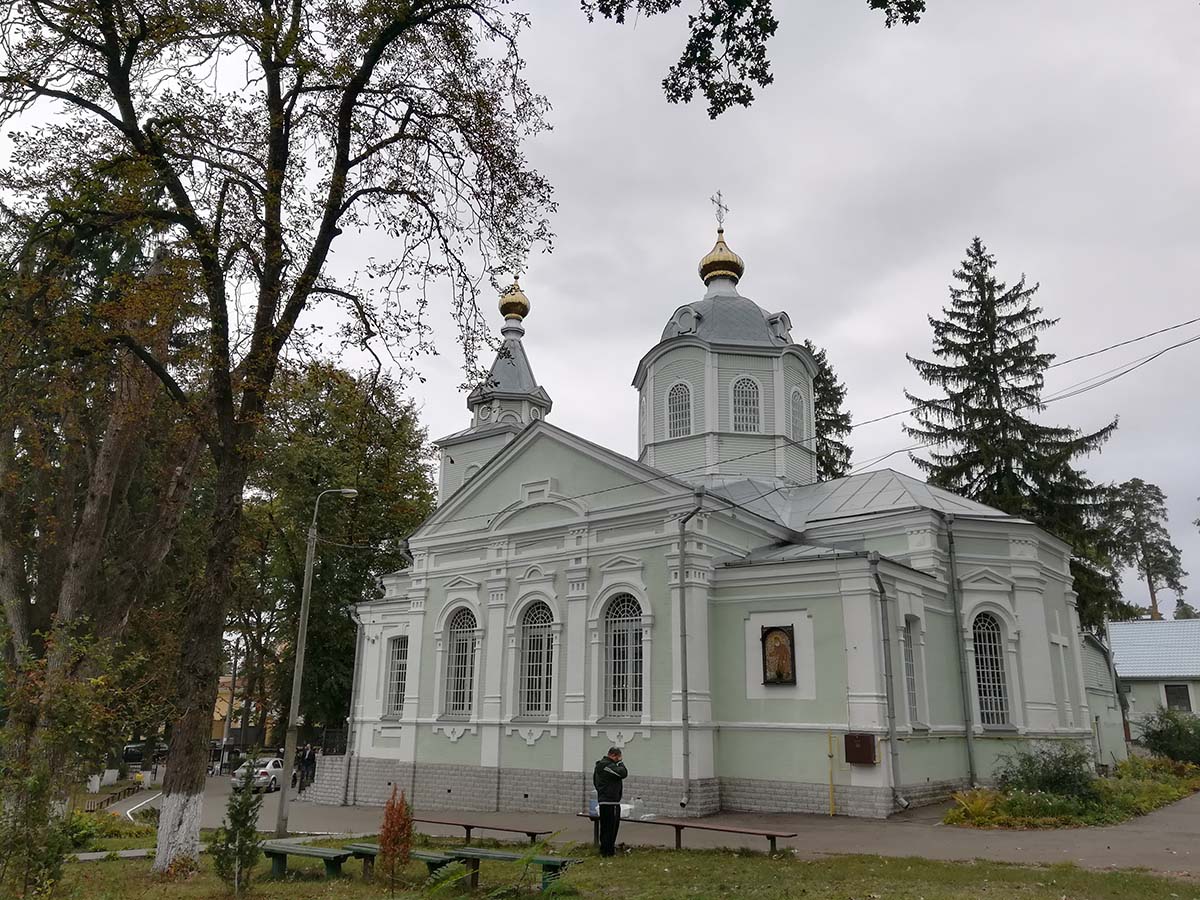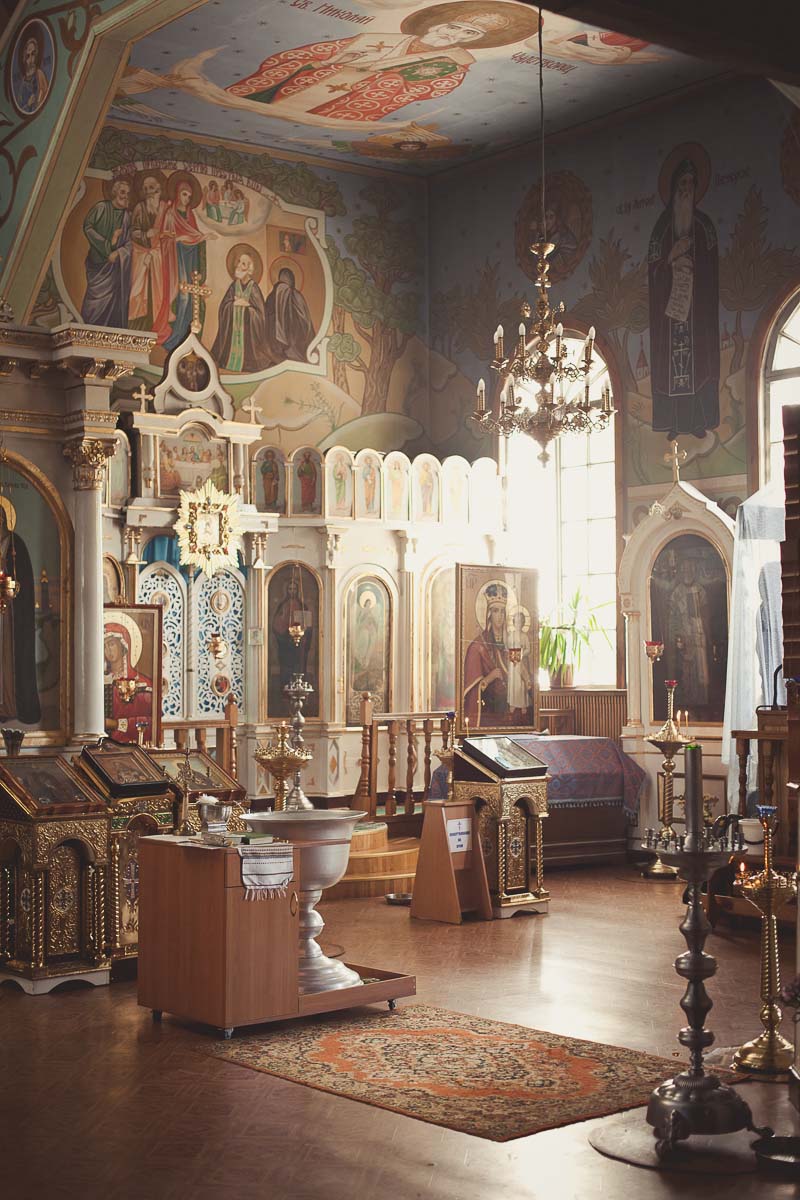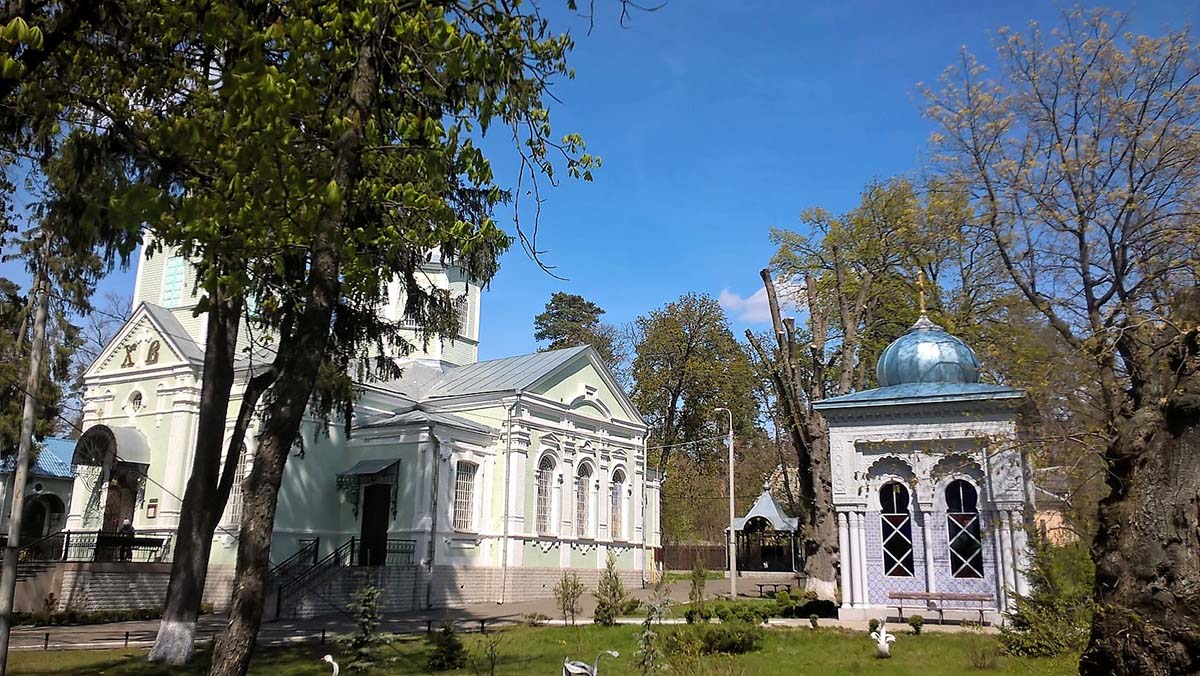At the end of the 19th century, in the area Pushcha-Vodica near Kiev, a dacha village of the same name was created, where citizens could build dachas on plots of a quarter of a hectare. A significant role in the development of Pushcha-Voditsa was played by the Pushcha-Voditsa Dacha Improvement Society, on whose initiative a park, a school and a theater were created in the village. The society included wealthy residents of the village, some of whom lived here all year round. In 1903, members of the Society turned to the then mayor with a request for permission to build an Orthodox church in the village, because it took a long time to get to the nearest churches. The mayor turned to Metropolitan Flavian of Kyiv and Galicia and received his blessing for the construction of the church. That same week, at a meeting, the Kiev City Duma decided to build a church and allowed the residents of Pushcha-Voditsa to create a construction committee. In October of the same year, committee members chose a place to build a church, and the city duma agreed with this decision and allocated 2 plots with a total area of 0.5 hectares.
In April 1904, construction began on a small wooden chapel, which was consecrated in May. Soon Metropolitan Flavian himself visited the chapel and gave his consent to the construction of a church in honor of St. Seraphim of Sarov. In the fall of 1907, the design of the temple was approved, which was developed by a resident of Pushcha-Voditsa, architect Ippolit Nikolaev. The project included the construction of a stone church with a separate bell tower, but it soon became clear that the committee did not have the money to build a stone church, so in May 1908 it was decided to build a wooden church on a stone foundation. The author of the new project was the chairman of the committee, engineer Tikhonov. The Kiev Ecclesiastical Consistory approved the project, but noted that the church building should be covered with brick. Construction of the church began on June 8, 1910, and on December 12 of the same year the temple was consecrated. The Soviet government registered the Orthodox community of the Church of Seraphim of Sarov in October 1920. By the end of the 1930s, the temple remained active and belonged to the traditional “Old Church Slavonic” orientation.
In 1937-1939, the temple was closed; services there were resumed only in 1943. Church buildings built in 1905-1907 and 1910-1911 were destroyed. The iconostasis with icons was dismantled by parishioners, who hid it all in the surrounding forest. After the war, the iconostasis was restored and returned to its place, but the old icons were still lost. In 1992, the Kiev artist Vandalovsky painted icons for the central iconostasis; in 1995, a new temple icon of St. Seraphim of Sarov was painted, as well as icons of the 12 apostles for the iconostasis of the right chapel. In 2000-2003 the church was restored. During 2004 – 2007, a Sunday school was recreated on the existing former foundation of the church-parish house.
Where is the Church of St. Seraphim of Sarov?
Nikolay Yunkerov Street, 42
(044) 401-93-96


